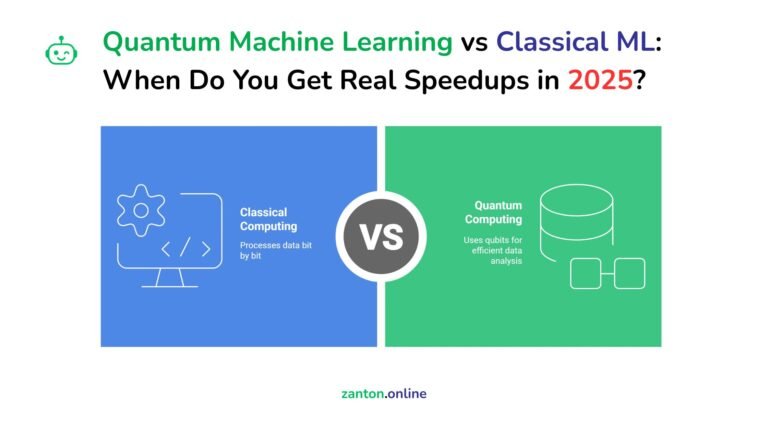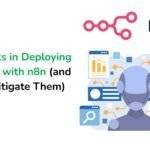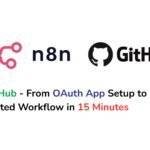Artificial Intelligence for IT Operations (AIOps) is no longer a buzzword—it has become a critical part of modern IT strategy. Drawing on years of research in AI for operations, DevOps transformations, and enterprise automation,
Thank you for reading this post, don't forget to subscribe!I can confidently say: adopting the right AIOps platform can be the difference between resilient IT systems and constant firefighting.
Businesses of all sizes, from startups to Fortune 500s, are turning to AIOps tools to handle monitoring, anomaly detection, event correlation, and automated remediation.
In 2025, the market is filled with both enterprise-grade vendors and open-source AIOps tools. Choosing the right one depends on your team size, budget, and IT complexity.
This article breaks down what AIOps really means, explores top tools with their pros and cons, and helps you match the right solution to your organisation’s needs.
What is AIOps?
AIOps (Artificial Intelligence for IT Operations) is the use of AI and machine learning to automate IT operations. Instead of humans manually troubleshooting, AIOps uses algorithms to:
- Detect issues faster than monitoring dashboards
- Correlate events across systems to find root causes
- Automate fixes such as restarting a failing service or scaling infrastructure
- Predict failures before they happen
In simple terms, AIOps tools = proactive IT management powered by AI. They help businesses reduce downtime, cut alert noise, and allow IT teams to focus on business innovation instead of firefighting.
Why Use AIOps Tools in 2025?
The scale and complexity of IT infrastructure today—cloud, microservices, hybrid environments—are too big for humans alone. AIOps tools address these challenges:
- Automation: Reduce repetitive manual tasks
- Noise reduction: Filter 1000 alerts into 1 actionable insight
- Prediction: Spot failures before they hit customers
- Optimisation: Improve performance and costs with AI-driven insights
Top 15 AIOps Tools in 2025

Here’s our AIOps tools list that brings together well-known leaders, emerging platforms, and open-source AIOps tools.
1. Moogsoft
- Pros: Strong event correlation, noise reduction, and anomaly detection. Trusted in enterprises.
- Cons: Pricing is on the higher side.
- Best for: Medium to large IT operations teams looking for scalable incident management.
2. BigPanda
- Pros: Unified monitoring, integrations with DevOps pipelines, real-time incident detection.
- Cons: Complex setup for beginners.
- Best for: Enterprises with hybrid/multi-cloud environments.
3. Dynatrace
- Pros: AI-driven full-stack monitoring, cloud-native friendly, predictive problem resolution.
- Cons: Premium pricing.
- Best for: Enterprises using Kubernetes, microservices, and cloud-native applications.
4. Splunk AIOps
- Pros: Market leader in log analysis with advanced machine learning features for IT ops.
- Cons: Can be resource-heavy in large setups.
- Best for: Teams prioritising log analytics with integrated AIOps features.
5. IBM Watson AIOps
- Pros: AI-driven insights, strong NLP (natural language processing).
- Cons: Requires customisation for best results.
- Best for: Enterprises already using IBM cloud and enterprise systems.
6. Palo Alto Cortex XSOAR (with AIOps features)
- Pros: Strong in security monitoring + IT operations.
- Cons: More security-focused than pure IT ops.
- Best for: Large enterprises combining security and IT operations under AIOps.
7. New Relic AIOps
- Pros: Strong observability platform with integrated anomaly detection.
- Cons: May require expertise to get maximum value.
- Best for: DevOps teams bridging monitoring and AI automation.
8. ServiceNow AIOps
- Pros: Deep ITSM (IT Service Management) integrations, automated workflows.
- Cons: Best results only when used with other ServiceNow solutions.
- Best for: Large enterprises already using ServiceNow.
9. Datadog AIOps
- Pros: Cloud-native monitoring, AI-driven anomaly detection, real-time pipelines.
- Cons: Feature-rich but can get costly at scale.
- Best for: Cloud-first organizations and DevOps teams.
10. BMC Helix AIOps
- Pros: Predictive analytics, automation, and ITSM integration.
- Cons: Geared toward enterprises—may be overkill for small teams.
- Best for: IT-heavy industries like telecom and banking.
11. ScienceLogic SL1
- Pros: Strong in relationship mapping and dependency tracking.
- Cons: Some advanced features require training.
- Best for: Teams needing hybrid IT monitoring.
12. OpsRamp
- Pros: Unified observability, proactive incident management.
- Cons: Smaller ecosystem than Splunk or IBM.
- Best for: Mid-market businesses modernizing IT operations.
13. CloudFabrix AIOps
- Pros: Focuses on event correlation, automation, and cost optimization.
- Cons: Competes in a crowded market.
- Best for: Teams needing cost-effective automation.
14. Zabbix (Open Source AIOps Tool)
- Pros: Free, open source, customizable monitoring platform.
- Cons: Requires technical expertise and setup effort.
- Best for: Startups, SMBs, and DevOps teams that want open-source flexibility.
15. Prometheus with Grafana + AI Plugins
- Pros: Open-source, cloud-native friendly, widely used in DevOps.
- Cons: Lacks enterprise support unless extended.
- Best for: DevOps and SRE teams needing custom AIOps pipelines.

Choosing the Right AIOps Tool for Your Team Size
| Team Size | Best Tools | Why They Fit |
|---|---|---|
| Small startups | Zabbix, Prometheus + Grafana | Cost-effective, open source, customizable |
| Small/Medium teams | OpsRamp, New Relic, Datadog | Easy integrations, cloud-friendly |
| Large enterprises | Moogsoft, BigPanda, Splunk, ServiceNow | Enterprise-grade, noise reduction, automation at scale |
| Security-driven teams | Palo Alto Cortex XSOAR, IBM Watson | Security + IT Ops synergy |
AIOps Examples in Action
- DevOps pipelines: Detects failing deployments automatically and rolls back.
- Data centers: Predicts hardware failures before downtime.
- Cloud monitoring: Adjusts resources dynamically during traffic spikes.

FAQs About AIOps Tools
What is the meaning of AIOps tools?
Tools that use AI/ML to automate IT monitoring, detection, and remediation tasks.
What is an example of AIOps?
Moogsoft detecting an anomaly across servers and auto-remediating it.
Does AIOps require coding?
Mostly no. Tools are plug-and-play, but custom workflows may need scripting.
Will AIOps replace DevOps?
No. AIOps complements DevOps by automating repetitive monitoring and alerting tasks.
What is the difference between AI and AIOps?
AI is a broad technology; AIOps is a specific application of AI for IT operations.
How to implement AIOps?
- Start small with monitoring integration
- Use anomaly detection
- Automate repetitive actions
- Scale across IT infrastructure
Why do we need AIOps?
Because IT complexity has exceeded human monitoring capability. AI reduces downtime and costs.
What is BigPanda AIOps?
BigPanda is an AIOps tool focused on incident correlation and unified monitoring.
Who invented AIOps?
The term was coined by research firm Gartner in 2017.
What is the future of AIOps?
In 2025 and beyond, AIOps will integrate deeper with observability, DevOps, and cloud-native systems.
How much do AIOps engineers make in the US?
On average, AIOps engineers earn $120K–$160K per year in 2025.









[…] talking about AIOps platforms. Businesses now need faster, smarter, and more reliable operations. AIOps, or Artificial Intelligence for IT Operations, helps enterprises reduce manual work, detect […]
An incredibly well-written article.